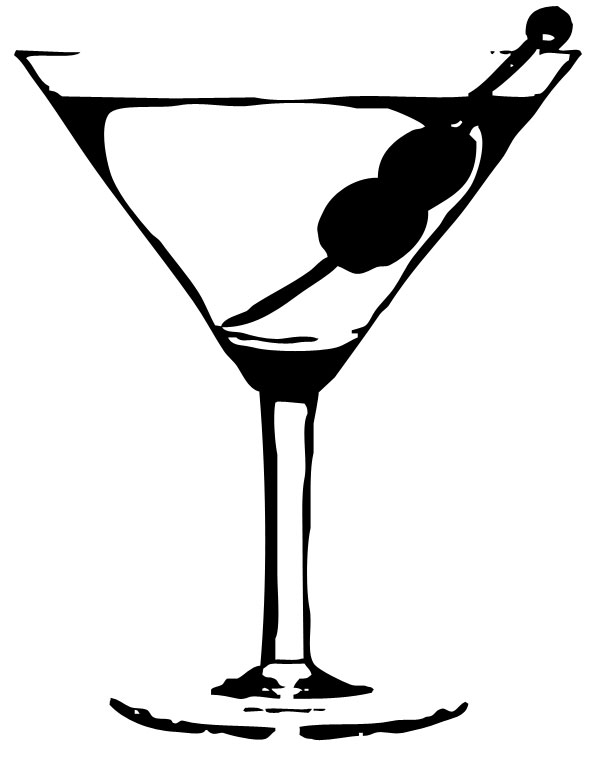
Interviews with the Movers and Shakers Of Mixology
Hosted by Blair Frodelius of Good Spirits News

A Conversation with Tony Abou-Ganim
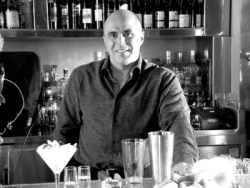 As the
National Ambassador of the US Bartenders Guild, http://www.usbg.org/, and Associate Member of
the Museum of the American Cocktail, http://www.museumoftheamericancocktail.org/,
Tony continues to educate about the history and lore of cocktails as
well as
lead the bar industry into continually improving the art of the
cocktail. Tony
lives in Las Vegas where he hones his craft daily by creating, sharing
and
enjoying the very best cocktails. I
asked Tony how he got started on his mixology career....
As the
National Ambassador of the US Bartenders Guild, http://www.usbg.org/, and Associate Member of
the Museum of the American Cocktail, http://www.museumoftheamericancocktail.org/,
Tony continues to educate about the history and lore of cocktails as
well as
lead the bar industry into continually improving the art of the
cocktail. Tony
lives in Las Vegas where he hones his craft daily by creating, sharing
and
enjoying the very best cocktails. I
asked Tony how he got started on his mixology career....
GSN: Who are some of the people who have and continue to influence
 your
career?
your
career?TAG: My earliest influence came from my Cousin Helen, who taught me “For a nickel more you go first class!” Also, my Uncle Charlie and Cousin Tony at the Brass Rail, who instilled in me the virtues of the classics. Jack Slick at the Balboa Café in S.F. where I learned there is no substitute for fresh ingredients and how to make a great Ramos Fizz. Pat Birmingham at McNally’s, where I learned the secret to a perfect Irish Coffee. Dale DeGroff (pictured at left), who inspired in me the passion for the craft of tending bar, and from whom I learned what a burnt orange twist lends to the Negroni. I continue to learn and be inspired every day as I see the excitement growing for the art of the bartender.
GSN: If you were to give one piece of advice to a bartender, what would it be?
TAG: Work with and learn from great
bartenders. Master the classics and
understand why they are classic and have survived the test of time, and
then develop your own style. But perhaps even more important is to
always remember that we are there to make our guests' day a little
brighter when they leave us, from when they arrived. The art of
hospitality has very little to do with the crafting of a well-made
libation. A warm welcome, a kind word, great service, and
attention to detail, go a long way in providing a great experience
while at your bar. We are there to relieve the woes of our
patrons, and not burden them with our own. Your guests'
experience is the most important ingredient and can never be overlooked
or taken for granted. If you can also serve a great Negroni, the
encounter is elevated to new heights.
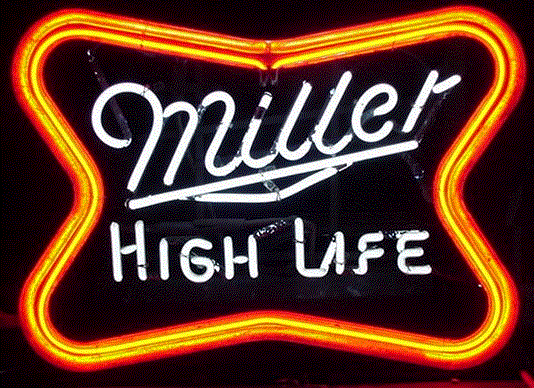
GSN: What is your favourite moment from your career?
TAG: Serving my dad a Miller High Life at the Brass Rail in 1980.
TAG: I am very excited to see the creative use of both savory herbs and homemade infusions and tinctures in the crafting of fine libations. Funny how something that was used 100 years ago can become the latest trend. This being said, it may prove a little more difficult for the novice home mixologist. I am always a firm believer in building a solid foundation first. Learn and understand what David Embury classifies as the 6 essential cocktails (the Martini, the Manhattan, the Old Fashioned, the Daiquiri, the Sidecar, and the Jack Rose - ed.) all simple classics, but great examples of classic technique, and useful for understanding what goes into a well-crafted and balanced tipple. After that, perhaps, you can venture into the world of making your own bitters and tinctures.
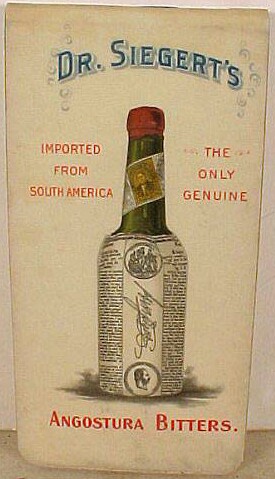
GSN: Speaking of bitters, do you think the days of Angostura are numbered?
TAG: There will always be a place for Angostura, as long as they don’t run out. I think it is great—it has been one of the defining missing elements in returning our craft to the Golden Age, and in the end it will lead to our guests enjoying much more complex libations.
GSN: Many mixologists feel that the least useful spirit is vodka. What do you think?
TAG: I enjoy vodka. I enjoy drinking vodka on its own, sans vermouth for its subtle nuances. We must not forget that vodka truly gained popularity in the late 60s, 70s, and 80s chiefly for its mixability. I also believe that if vodka—then best known in Eastern Europe and not the United States—had been available in Jerry Thomas’ time, then perhaps he too, would have used it in mixing drinks. Vodka, like all spirits has its place behind the bar. After all, is gin not really just flavored vodka?
GSN: Any new spirits or liqueurs that you are especially excited about? On another note, what lost or "forgotten" spirits would you like to see available once again?
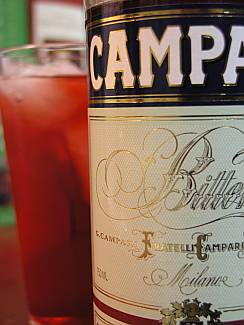
TAG: I’m excited about all of them! It is so exciting to see lost and forgotten spirits and liqueurs being re-discovered and brought back into the limelight. The great news is that they are all (forgotten spirits) coming back, slowly but surely.
I am also very excited about Campari’s 150th Birthday; I tried Campari for the first time in 1985 and could not understand why anyone would ever drink it, but it’s become my favorite thing to drink. If I could also stow away a case of Campari, some good Italian sweet vermouth and a harmonious gin for making Negronis, I would be very happy to ride out my days.
GSN: Your new book is loaded with original recipes as well as the classics. How did you choose which ones to include? Do you have any personal favorites, both original and historic?
TAG: My thinking was that there are categories of mixed drinks that should be recognized. Rather than just recount a thousand recipes that have been recounted a thousand times, I put a fresh, seasonal twist on them and made them my own. I also feature some of my favorite classics such as the Dry Martini, Margarita, and—my personal favorite—the Negroni. I guess I wanted to offer a well-rounded selection and selfishly feature drinks I love to drink!
GSN: What are your three favourite places to get a cocktail, and who makes them?
TAG: Bradley at Bix, Julio at Tommy’s, and the Irish Coffee at Buena Vista, all in San Francisco. A French 75 from Colin at The Hemingway Bar, Ritz Paris. Julie Reiner’s Hibiscus Swizzle at the Flatiron Lounge. A Tom & Jerry at the Brass Rail in Port Huron, Michigan. One of Matt’s Negroni’s at Inoteca Liquori Bar in New York. A Perfect Dry Martini, 4-1 at Pegu Club. So many great cocktails, so many great places to drink them and, now, so many great bartenders making them!
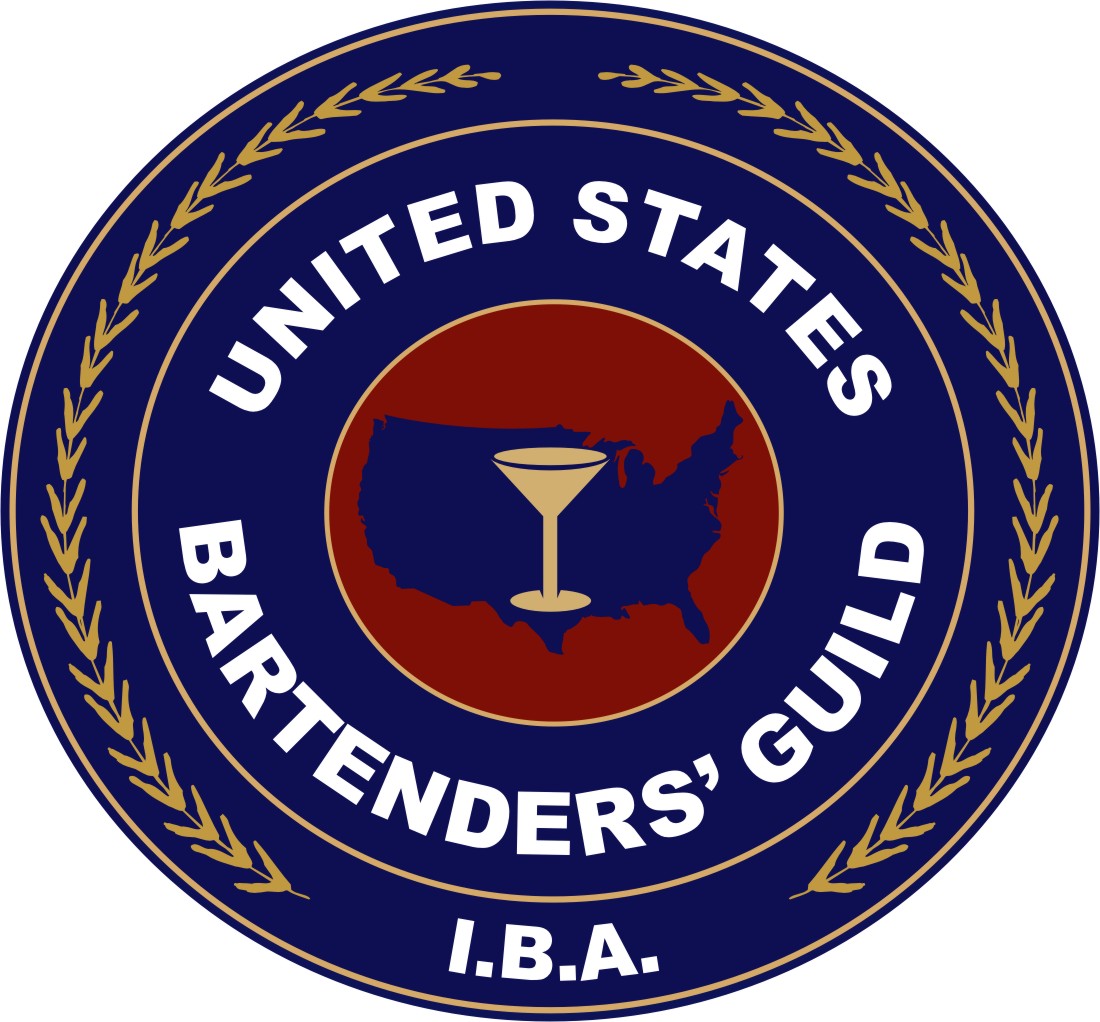
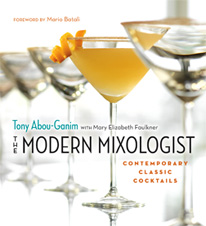 GSN: What are your
upcoming plans for 2010?
GSN: What are your
upcoming plans for 2010?TAG: Wow, it is going to be a busy year! I will be actively promoting the book this year with signings around the country coupled with promoting the United States Bartenders Guild. It is our hope that we continue to develop and expanded the existing chapters and grow chapters in states where they don’t exist. I also plan to launch a charitable foundation called the Helen David Memorial Bartender Relief Fund to help our brothers and sisters working behind the stick when they find themselves in need due to an illness or unforeseen tragedy. Website information will be available soon at the USBG.org.
GSN: I understand you're developing a complete line of bartender tools which will be available in the Summer of 2010. Tell us a bit about TAG barware.
TAG: TAG BAR Tools is a professional quality line of barware designed by a bartender for bartenders. I also believe that with the growing interest among consumers in the art of mixing great cocktails at home, there is a void with regard to a complete, high-quality line of tools designed to work together that are both effective and sexy.
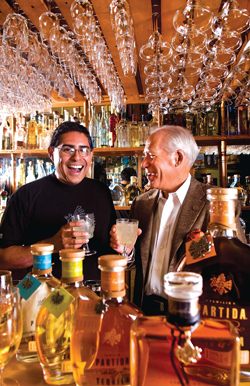 GSN: How do you feel about the relationship between food
and cocktails? Is there a place for pairing, as there is with
wine?
GSN: How do you feel about the relationship between food
and cocktails? Is there a place for pairing, as there is with
wine?TAG: I believe that the cocktail is the opening act for every great dining experience. I would not go to a restaurant without first stopping at the bar for an aperitif cocktail—it sets the stage for what’s to come. With that said, I find it hard to pair cocktails throughout a meal and generally switch to wine—that is, unless I’m having the pork tacos at Tommy’s and drinking Julio’s wonderful Margaritas! (Julio Bermejo with Gary Shansby at Tommy's pictured on the right).
GSN: Lastly, I always ask leading mixologists how they think the word "cocktail" came about. What is your opinion?
TAG: Cocktail may have derived from the French term for egg cup, coquetel. One story that brought this reference to America speaks of Antoine Amedie Peychaud of New Orleans, who mixed his Peychaud bitters into a stomach remedy served in a coquetel. Not all of Peychaud's customers could pronounce the word—or, as they imbibed several of Antoine’s concoctions, they began to slur their speech and pronounce it “Cocktail.” Unfortunately this story doesn't add up because of conflicting dates. But I still like it the best!
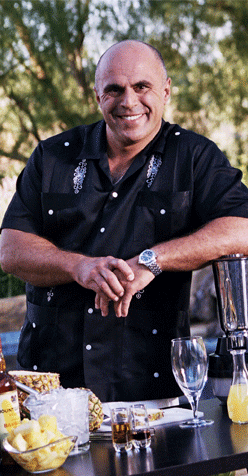
and Cormac McCarthy’s “The Crossing”.
Tony can be reached at tony@themodernmixologist.com
Tony's book and his instructional DVD are available here
Blair Frodelius lives in
upstate New York and is the
editor of Good Spirits News. He is also a professional musician
and is co-founder of Out of the Box Entertainment. He can be
reached at
goodspirits@frodelius.com
Good Spirits News

